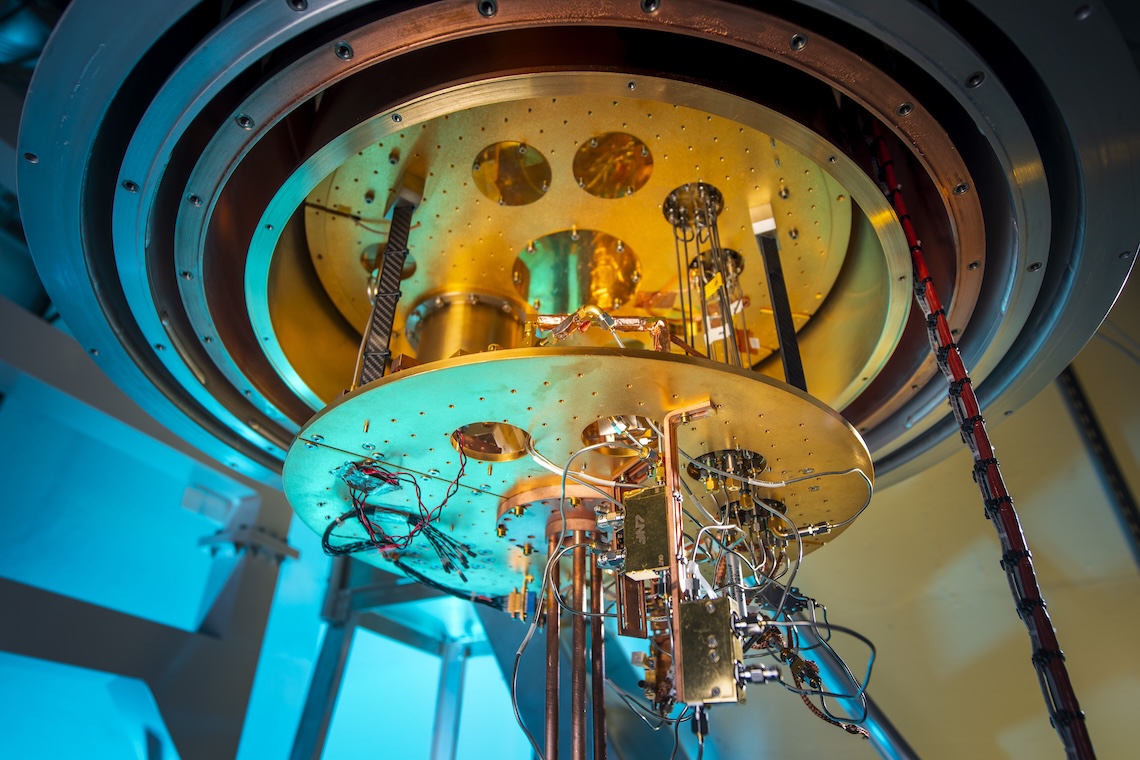
Fermilab leverages its particle physics expertise and infrastructure to pursue high-impact quantum information system research and development. Partnering with other institutions, Fermilab researchers draw on this expertise in many areas.
Computing applications and simulation
Fermilab scientists are creating algorithms to optimize solutions to common particle physics problems such as finding the set of potential particle paths closest to a particle’s true trajectory. They start by defining algorithms to solve very basic problems and then scale them up to eventually apply them to more complex particle physics problems.
Theoretical physicists are exploring connections between quantum science and quantum field theory to improve quantum simulations to make calculations exponentially more efficient than possible on classical computers. For example, to learn about quantum gravity, a team of researchers replicated the dynamics of a traversable holographic wormhole by experimentally attaining the corresponding quantum dynamics in a quantum computer using nine qubits.
Scientists are also drawing on Fermilab’s strengths in artificial intelligence and microelectronics to accelerate quantum computing performance for high-energy physics applications.
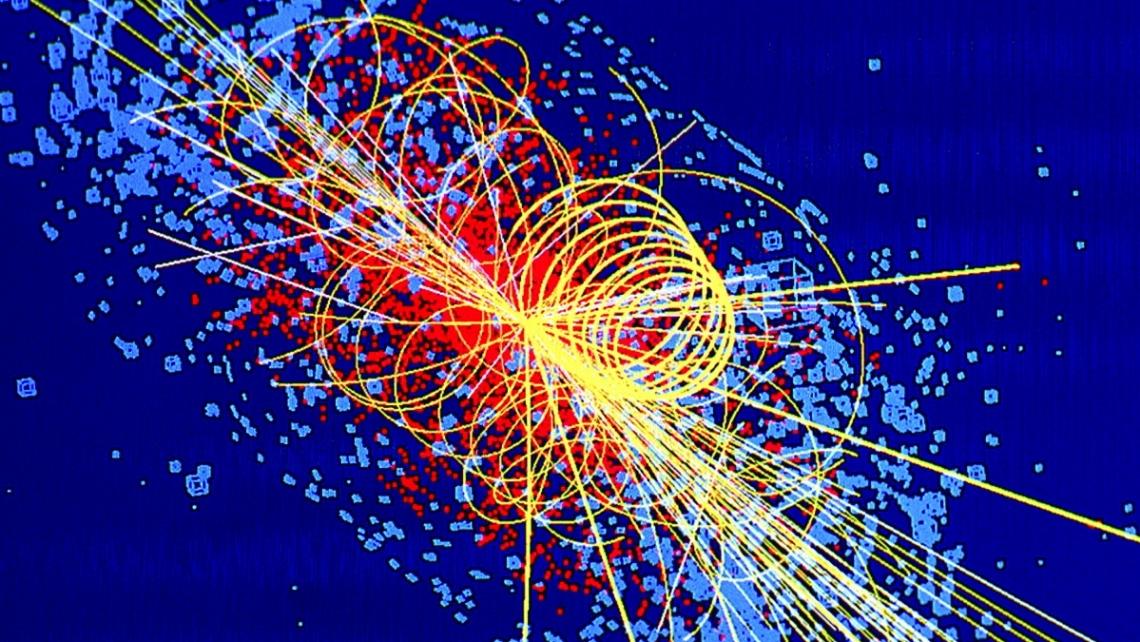
MAGIS-100 project
Fermilab is leading the Matter-wave Atomic Gradiometer Interferometric Sensor project, which supports the MAGIS-100 experiment international collaboration. Using an innovative, 100-meter-long atom interferometer, MAGIS-100 will demonstrate quantum superposition of atoms over a distance of a few meters.
In addition, MAGIS-100 will search for evidence of ultralight dark matter, a potential model for the elusive substance that accounts for a significant portion of the universe but has yet to be directly observed. Thepioneering technology used for MAGIS-100 could lead to experiments with even greater sensitivity.
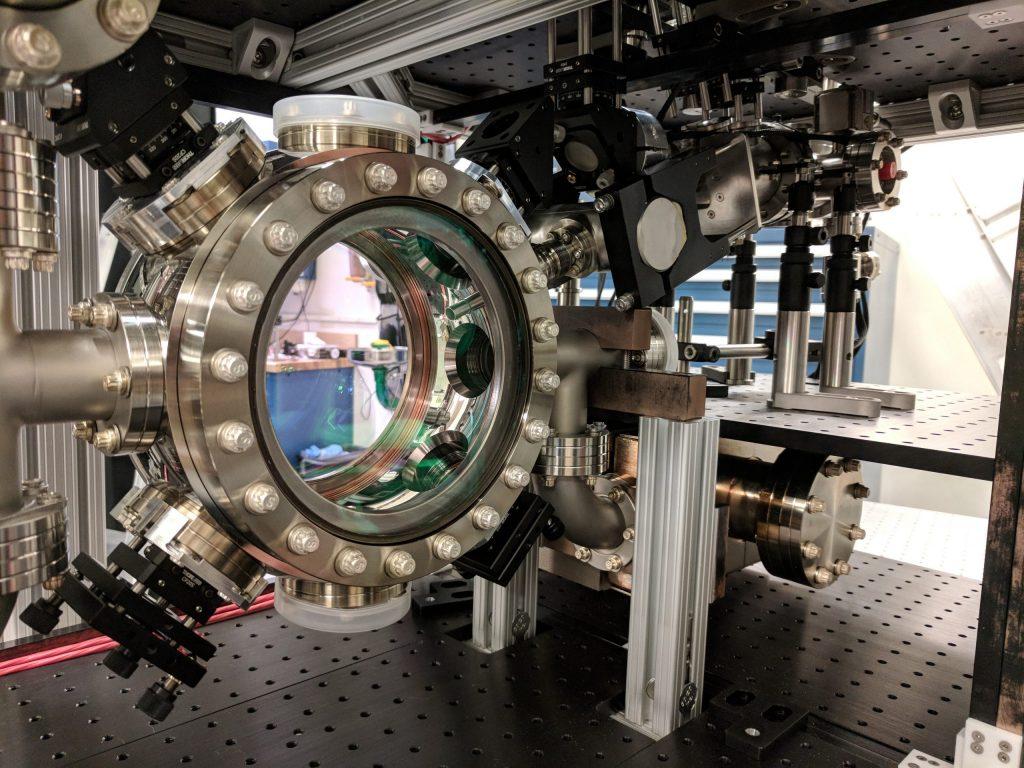
Quantum Instrumentation Control Kit – QICK
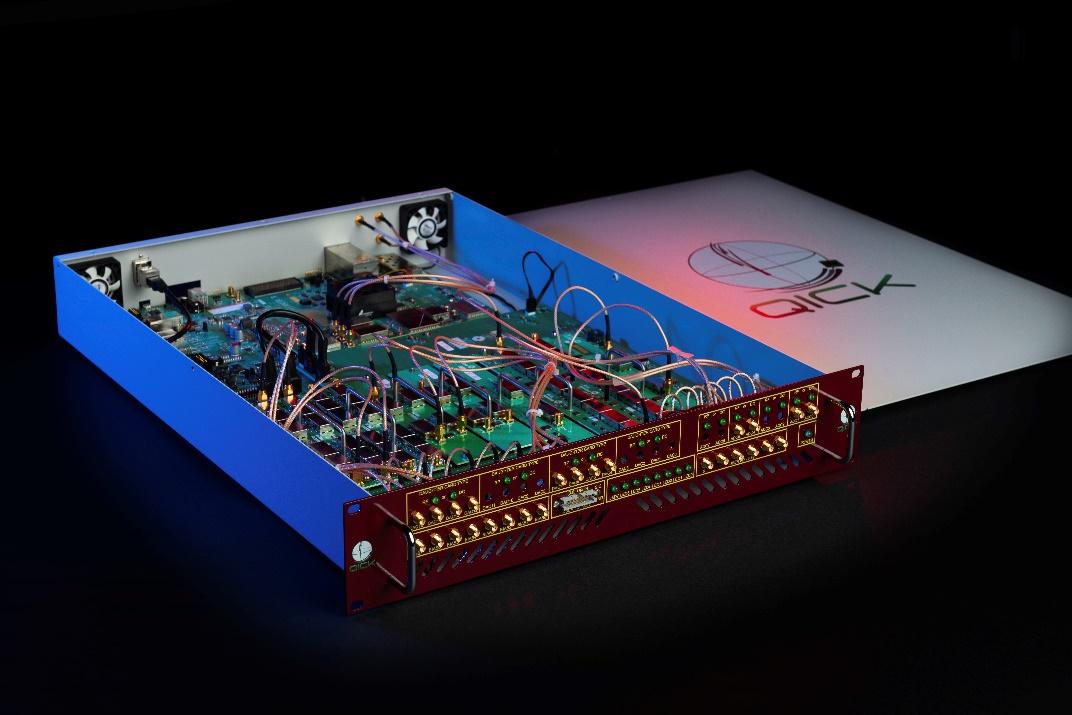
A team led by Fermilab, in collaboration with researchers from the University of Chicago, Stanford, and Princeton, developed the Quantum Instrumentation Control Kit, a quantum control and readout system composed of a radio-frequency circuit board, control and readout electronics, and open-source software. QICK reduces costs and saves space, as it eliminates the need for the hardware traditionally used. QICK’s use in the scientific community has grown to more than 350 registered users worldwide since its inception in 2022.
QICK 2.0, which features revamped software and firmware, was rolled out in September 2024. The QICK team also developed an accessory, the QICK box, which includes the original QICK system plus a custom front end, electronics and cabling.
Quantum networking
Together with other institutions, Fermilab researchers are working out how to transmit quantum information across a distance. A reliable, scalable and secure quantum network has implications for national security, the energy delivery infrastructure, information security and countless other areas.
Fermilab is leading the Illinois‐Express Quantum Network (IEQNET) project, which aims to develop and demonstrate the operability of a repeaterless, transparent optical quantum network in the greater Chicago metropolitan area. Building on this work, Fermilab is also leading the U.S. Department of Energy-funded Advanced Quantum Networks for Scientific Discovery (AQNET-SD) project. For this project, researchers are developing tools and practices to optimize a quantum network between Fermilab and Argonne National Laboratory. The knowledge gained from this work will help further scientists’ understanding of quantum networks and contribute to the realization of a national quantum network.
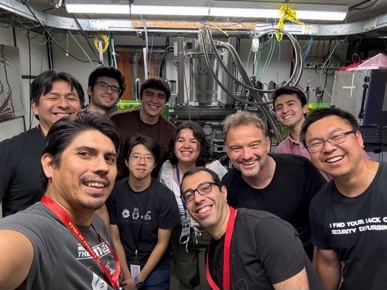
Quantum Science Center
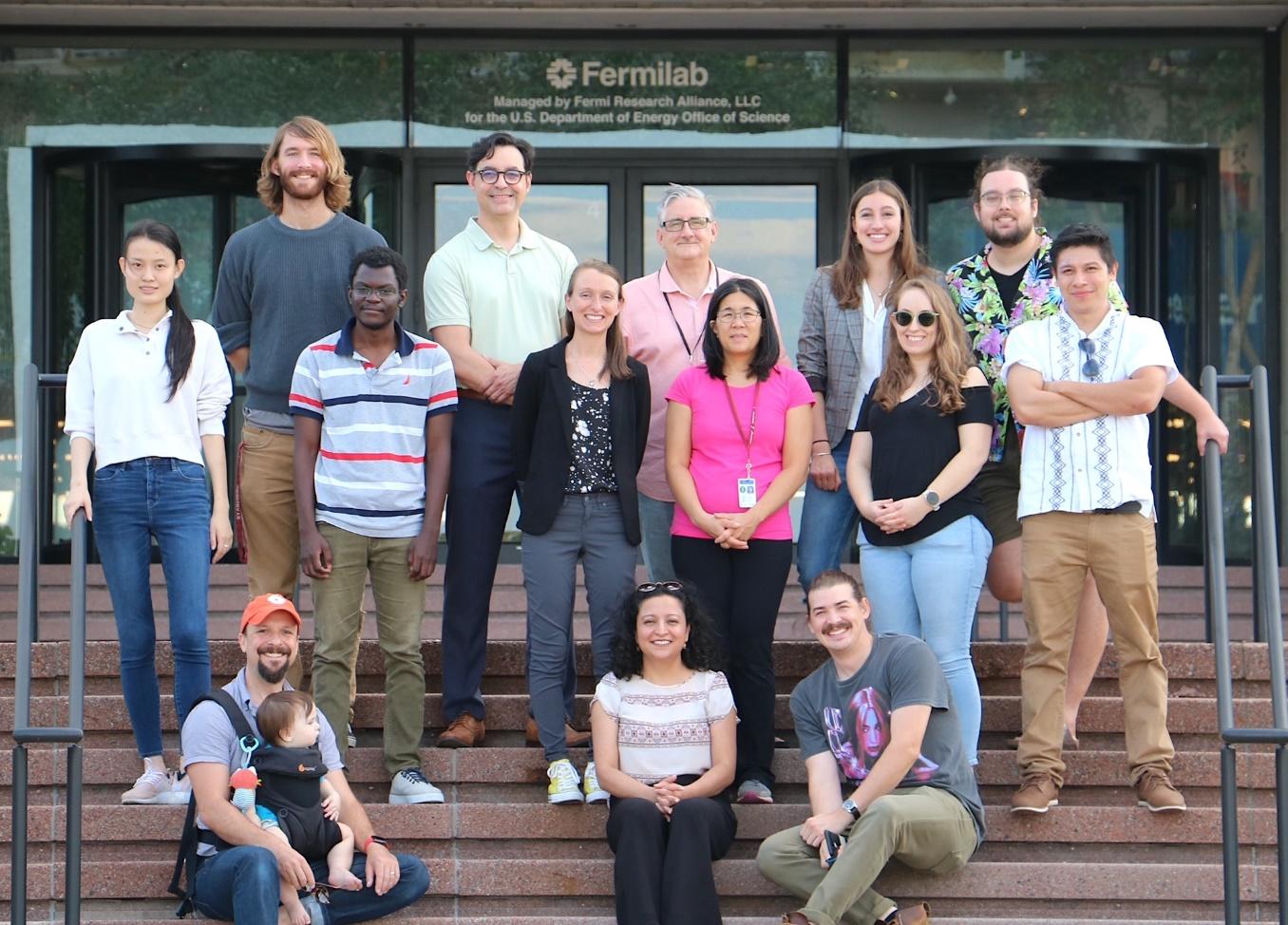
Fermilab was a key partner in the Quantum Science Center, a U.S. Department of Energy National Quantum Initiative science research center managed by Oak Ridge National Laboratory. Fermilab scientists and engineers bring unparalleled high-energy physics instrumentation expertise, to develop technology developed for scalable control and manipulation of quantum information. Their work with QSC included exploring this technology for use in current and next-generation quantum devices on various platforms, including superconducting qubits, neutral atoms, charged ions, color centers and topological quantum materials.
Fermilab’s unique hardware development and testing capabilities enable its scientists and engineers to produce qubit systems that are highly resilient to environmental disturbances, resulting in more robust quantum computing. At the same time, they provide new capabilities in low-background searches for dark matter. Other areas of research with QSC included custom quantum simulators, quantum critical detection and quantum information processing.
Quantum sensing
Through the U.S. Department of Energy Office of Science program Quantum Information Science Enabled Discovery, or QuantISED, Fermilab scientists work closely with device experts from the quantum information science field to develop novel quantum sensors and integrate them into high-energy physics experiments to probe new, beyond-Standard-Model dark sector physics.
Fermilab scientists’ use of superconducting qubits for single microwave photon counting has revolutionized the field of dark matter searches, with multiple groups worldwide having adopted this technology. These efforts could contribute to dark matter detection for particle physics and cosmology as well as to countless applications that will rely on advances in quantum information systems.
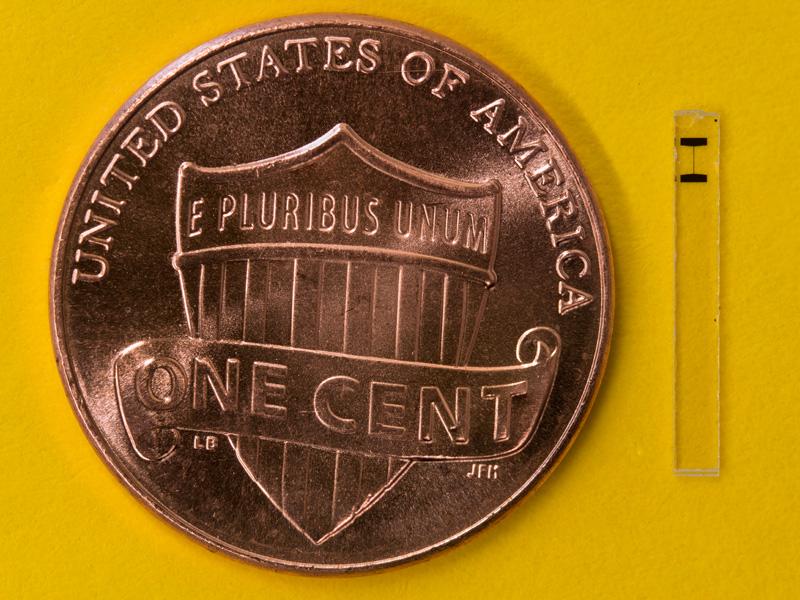
QUIET test bed
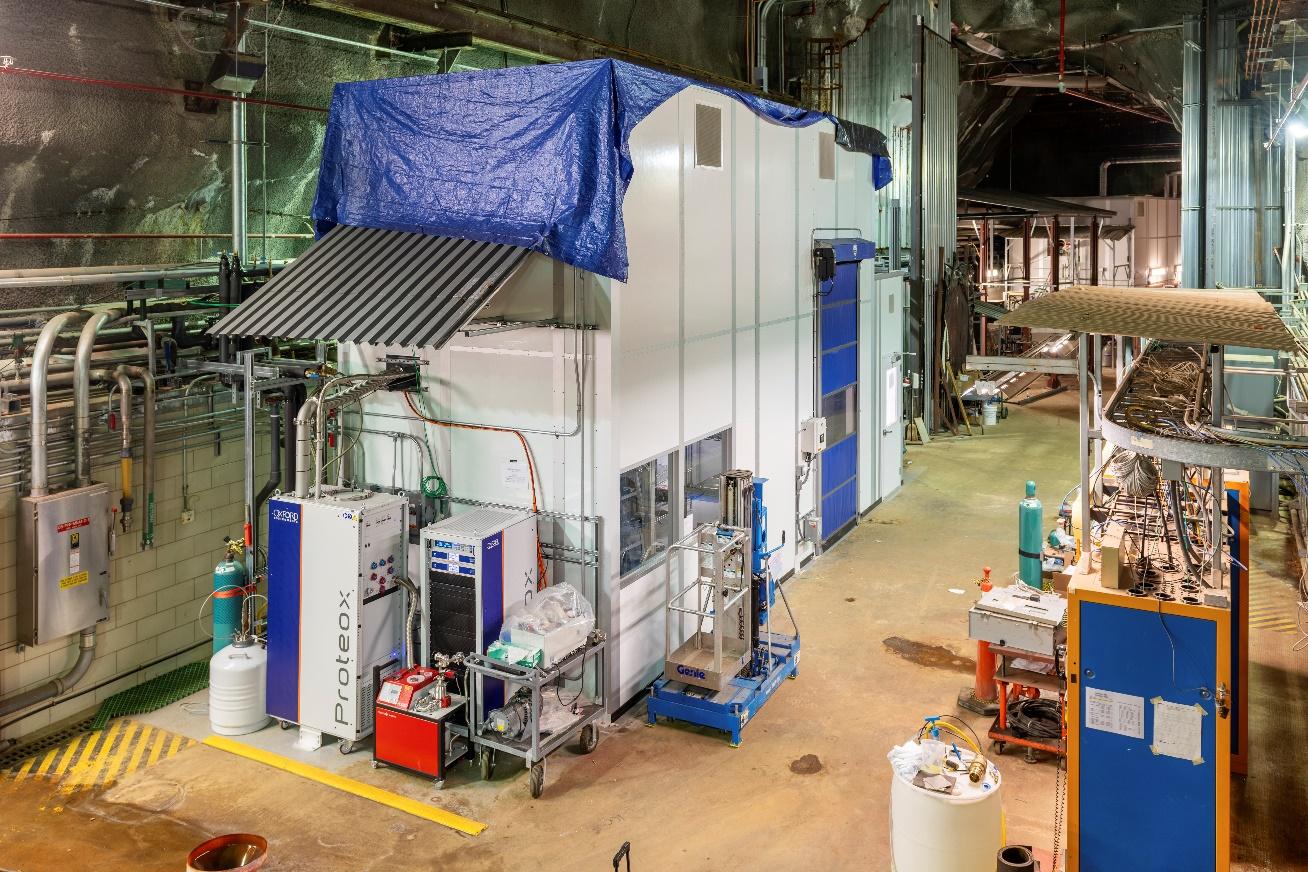
Superconducting qubits are negatively impacted by environmental factors such as radiation. Understanding how they are impacted is crucial to designing more robust qubits. One hundred meters underground at Fermilab sits a quantum sensor called the Quantum Underground Instrumentation Experimental Testbed, or QUIET. At Earth’s surface sits its counterpart, LOUD. Together they will facilitate controlled experiments to directly compare environments with significantly reduced cosmic ray interference with that on Earth’s surface.

